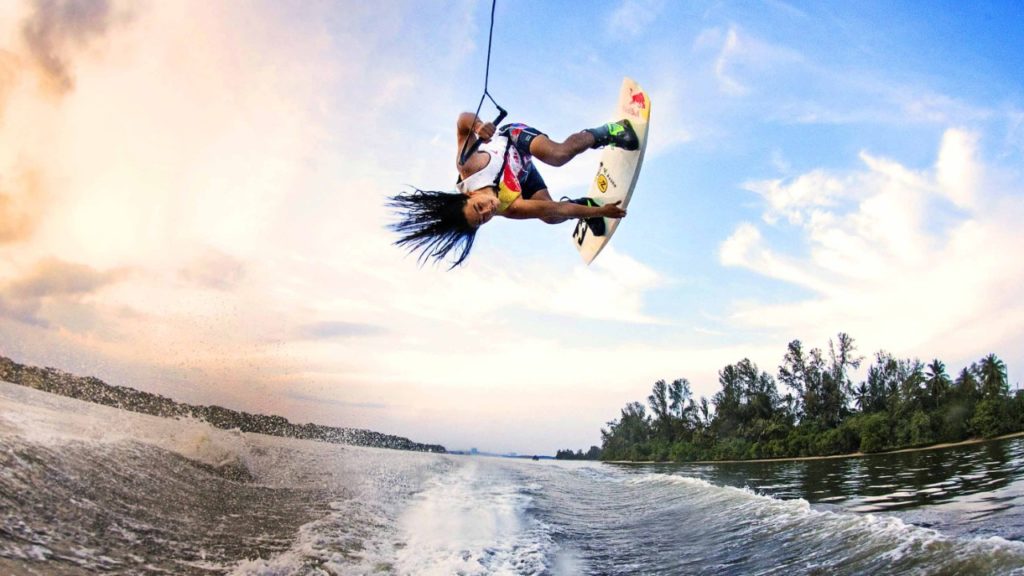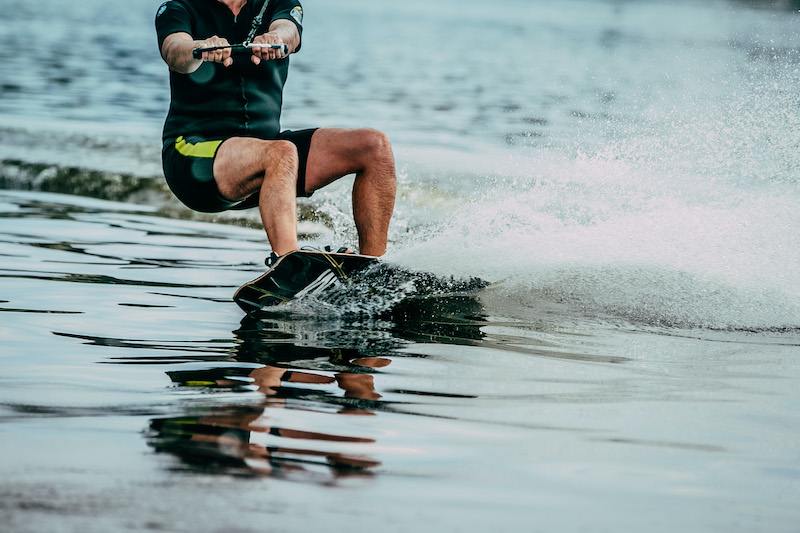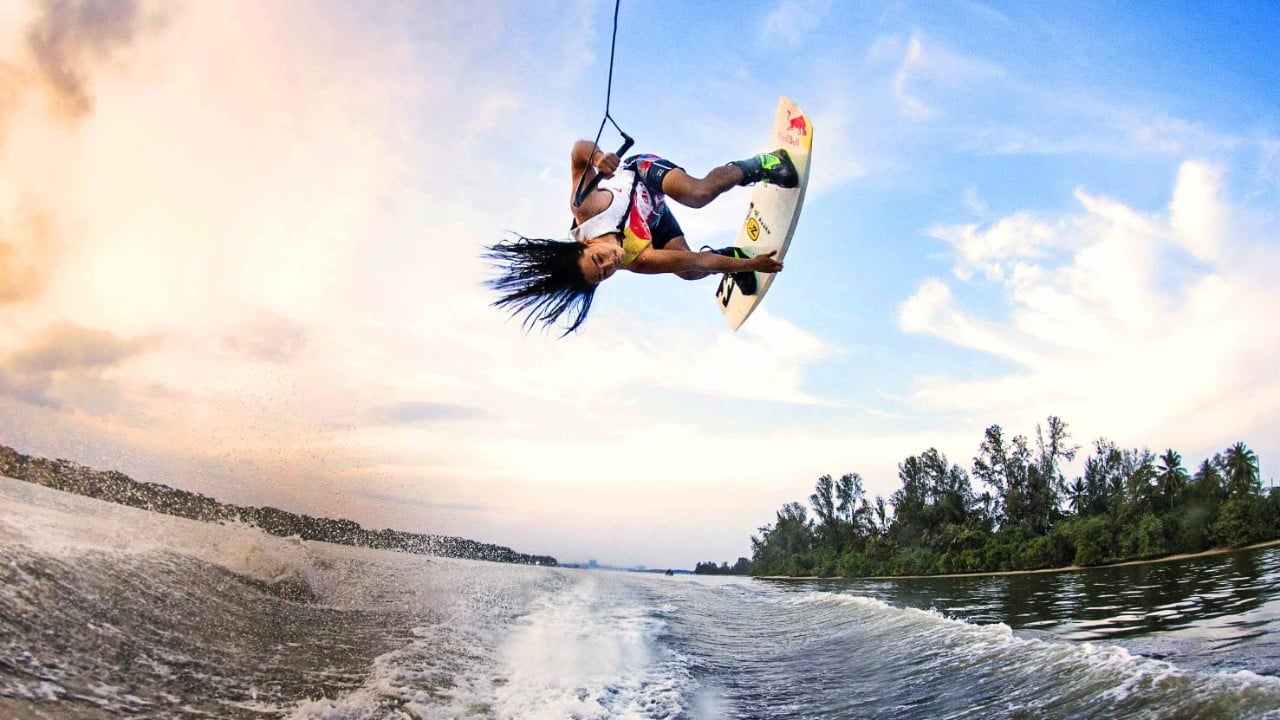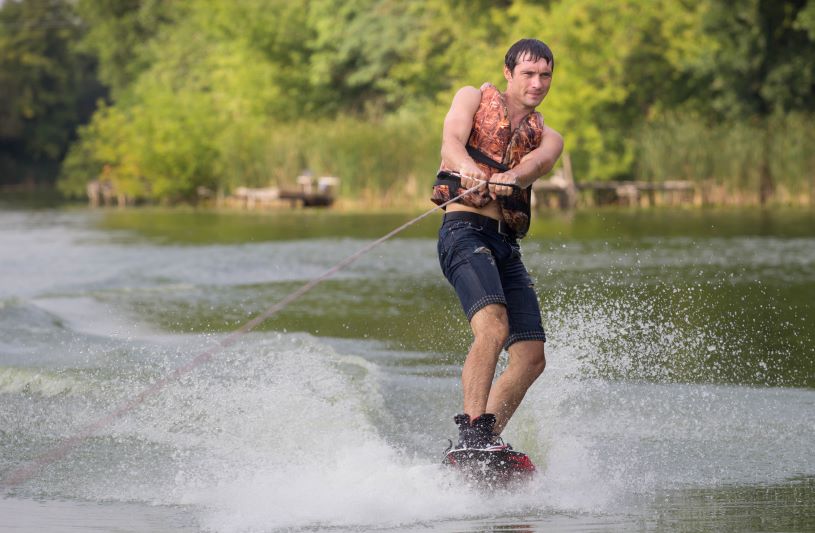Buying a new wakeboard can be confusing. We'll explain the...
Read MoreWakeboard Buyer's Guide
Beginners | Experienced | Kids | Women | Men
Everything you need to know to confidently make a great wakeboard purchase
Wakeboarding has only been around for about 30-years, but it originates from some of the most traditional, and oldest forms of water and snow sports. Combining the best attributes of water skiing, snow boarding and surfing, you get the best of all worlds helping bring out the enthusiast in all of us. Giving way to one of the biggest rushes in water sports filled with adrenaline, speed and big air tricks. Our wakeboard buyer’s guide will help you find the right board for your wakeboarding fun.
We’ve seen many changes with wakeboarding over the years since being introduced in Australia back in the 80’s. Starting out called skurfing which consisted of a handcrafted board, no bindings and a rider being towed behind a boat, it’s since become that’s now technologically advanced, with bindings and the option of being towed behind a boat or tow rope attached to a suspended cable above the water.
Wakeboarding has since spawned other forms of water sports including wakeskating and kneeboarding which share many of the same similarities.
Types Of Wakeboarding
There are two main types of wakeboarding including the more popular cable and boat. Each has their pros and cons while both offer the same adrenaline-rush performance. The differences are better explained below:
- Boat or jet ski – similar to water skiing, the rider holds onto a rope with a handle and is pulled around on the water by a boat. Due to access, this is the popular type of wakeboarding.
- Cable – cable parks are a more controlled environment specifically setup for wakeboarding and other forms of water sports. Here, a rope with a handle where the rider holds on to is suspended from a cable mechanism. The cable mechanically moves around a circuit where ramps and other obstacles provide a launching pad for tricks and other stunts.
Cable wakeboarding is becoming increasingly popular with more cable parks emerging. Countries like the UK and Australia have a fair amount of cable parks with more popping up in the US, especially in the south and southeast.
We have compiled a list of wakeboard cable park locations, in the US and highlighted those that run wakeboarding camps. Many wakeboard parks offer lessons or you can sometimes hire an instructor to come out with you for the day on your boat.
Skill Level
The skill level of wakeboarders can be typically broken down into three:
- Beginner – little to no experience with wakeboards recommended with a continuous or mellow 3-stage rocker
- Intermediate – intermediates can use both rocker types or a hybrid and often look refine their skills while trying out different stunts.
- Advanced – advanced wakeboarders start to look for 3-stage or aggressive continuous rockers which allow you to take on harder jumpt, stunts, and other big-air tricks.

Wakeboard Rockers
A wakeboard rocker ultimately helps define the user’s riding experience and can easily be seen while visualizing the wakeboard on a flat surface, on its side. It’s defined as the difference in shape between the tip and tail and the center of the bottom of the wakeboard.
There are two main types or wakeboard rockers with a 3rd being a hybrid of both which are detailed below.
3-Stage Rocker
3-Stage rockers feature three different planes between the tip and tail of the board and provides a greater release while coming off the wake. The downside is less control, poor carving ability and slower speed. Due to the flat spot under the board, landing are rougher and it takes longer to get up speed compared to a wakeboard with a continuous rocker.
Continuous Rocker
Just like it sounds, a continuous rocker features a curved, smooth shape. This type of rocker provides a smoother, faster ride and makes it easier to hook turns on the drop of a dime. Wakeboards with this rocker line provide a predictable pop, or launch off the wake and are especially great at carving through smooth water.
Hybrid Rocker
A hybrid rocker is a combination of both a 3-stage and continuous rocker offering the best of both worlds. Depending on the brand of the board itself, the rocker will offer subtle differences which may resemble one type over the other just a bit more.
Camber Rocker
One of the newest rocker, or profiles introduced is a camber. The design resembles that of a snowboard and traditional ski and allows you to rid more centered on the board than a 3-stage rocker continuous rocker line. This helps alter your weight distribution and provides the rider with more control.
Understanding Wakekboard Features, Shapes And Designs
There are numerous wakeboard features, shapes and designs, most of which are characterized by the base material which are all best described below:
- Channels – channels on the bottom of the board have a similar effect of longer fins that help reduce tension while absorbing much of the impact before the wakeboard itself lands on the water.
- Concave – concaves are dents in the bottom of the board that helps the board sit higher on the water. The dents which are located at the bottom of the board allows the front of the board to lift out of the water and help reduce suction.
- Featureless – board without channels or fins; they’re literally featureless. This leaves the performance of the board solely up to the rider, rocker, shape and setup of the fin and makes it easier to customize the ride itself.
- V-Shape – V-shapes are often seen in wakeboard with a 3-stage rocker to help make landings softer. This resembles boats with v-shaped hulls which helps stabilize and makes for a smoother ride.

Wakeboard Fins
Wakeboard fins provide various levels of grip between the water and board itself. The amount of grip differs as there a multiple fin setup, amounts of fins and placements. Fins aren’t a necessary component with wakeboards as they naturally track through the water due to design of being longer then wider, but they do provide better traction, which means more control.
Below, are the most common types and placement setups of each.
Removable
Removable fins are just that, they affix to the board with screws and can easily be removed. These are highly popular with families and those who may share their board with someone else, each with different riding styles and experience levels. Being removable, these boards allow the rider to customize their ride by moving, switching or not using the fins at all.
Molded-In
Molded-in fins are attached to the board permanently and are more durable then removable fins. They allow for less customization without the ability to move or detach.
Wakeboard Bindings
Wakeboard bindings, also called wakeboard boots, are designed to connect you, the rider, to the board itself. The bindings lock and unlock onto the board with subtle differences depending on the rider’s preference including flex, fit, how they attach, closure system, and the type of binding itself.
For more detailed information on wakeboard bindings and our suggested size charts, please click below.
Wakeboard Size Chart
When buying a wakeboard, size really does matter. The size of the board is the singular most important detail when buying a new board and is based on the rider’s weight. Below, we’ve detailed a size chart that works for both males and female.
When in doubt, there’s a difference between experienced and inexperienced riders when choosing a wakeboard. I’ts better for beginners to choose a size larger then smaller as bigger boards provide a more stable ride. Larger boards are slower and provide more surface area underneath the rider helping make landings softer while minimizing edge catches.
On the other hand, more experienced wakeboarders can consider smaller boards which tend to be faster and makes for more aggressive edge to edge transitions. Smaller boards are easier to control then larger boards, but the risk is greater for harder landings due to less surface area.
For more information on wakeboard sizing, please click the link below.
Wakeboard Reviews
In addition to our wakeboard buyer’s guide, we’ve created the most comprehensive, unbiased wakeboard reviews to further guide your decision-making. From our comprehensive research, we’ve introduced reviews broken down in each of the categories listed below:
- Wakeboarder – we review wakeboards for kids, men and women, and for beginners to the more experienced wakeboarders. We also have some reviews of cable park wakeboards.
- Brand – we review a wide range of the most popular wakeboard brands – Connelly, Hyperlite, Liquid Force, O’Brien, Ronix, Slingshot and others.
Feel free to browse our reviews. Hopefully this wakeboard buyer’s guide will help you to understand the basic design features of different wakeboards so you can easily and confidently find one to suit you.
Search
Brands
Wakeboarder
Popular Buyer's Guides
Recent Articles
Read the Latest Buyer's Guides
Wakeboard Buyer’s Guide
If you are purchasing a new wakeboard our wakeboard buyer's...
Read MoreHow To Choose The Best Wakeboards for Beginners
We'll tell you what to consider and how to choose...
Read MoreWakeboard Bindings Size Chart And Buyer’s Guide
Our wakeboard bindings size chart and buying guide, will help...
Read More



